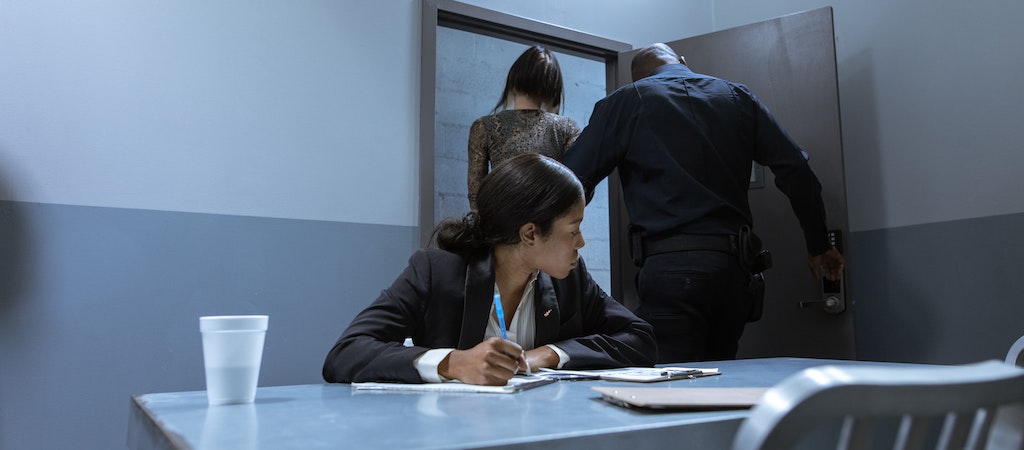
What Does The Criminal Justice System Look Like For Females
In a society steeped in patriarchal norms, the criminal justice system often presents a unique set of challenges and experiences for women. The intersection of gender, crime, and justice engenders a complex tapestry that warrants careful dissection. This document aims to delve into the intricacies of the criminal justice system as it pertains to females, casting light on the subtle and overt nuances that differentiate their experiences from their male counterparts. From incarceration rates and sentencing disparities to the impact of societal conditioning, we will explore the myriad facets of this compelling issue, in an effort to discern the contours of justice through a gendered lens.
Incarceration Rates and Sentencing Disparities
Notwithstanding the lower crime rates among women compared to men, the incarceration rates of females have seen a staggering increase over the years. This rise is significant when viewed in light of the types of crimes women are typically convicted for – predominantly non-violent offenses such as drug-related crimes. Moreover, the sentencing disparities between genders further manifest the inherent bias in the system. Women, particularly those of color, often receive harsher sentences for similar crimes committed by their male counterparts, underscoring the need for comprehensive criminal justice reform.
For example, when given a freedom-restricting sentence, women are more likely to be placed on probation or house arrest as opposed to being sent to prison. This could partially be attributed to the fact that women are often primary caregivers in their households and hence, there is an emphasis put on making sure offspring don’t end up in foster care due to their parent’s incarceration. While this may seem like a boon, it also points to the subtle sexist undertones that inform the way women are treated in the criminal justice system.
Federal Prison Options
While both genders tend to end up in local jails or state prisons; women are often funneled into a specific subset of facilities that cater solely to women due to the lack of gender-neutral correctional centers and overcrowding issues. Also, there are certain federal prison options that are available to women offenders such as the Alderson Federal Prison Camp known as Camp Cupcake. This is a minimum-security facility with no barred walls or guard towers, located in West Virginia and it specializes in providing support services such as counseling and education for its inmates. It is one of the few avenues of hope for women to turn their lives around and eventually re-enter society.
On the other hand, when women are imprisoned in federal prisons, they are often sent to much harsher and more restrictive facilities. This discrepancy is rooted in the long-standing patriarchal belief that men deserve tougher punishments than women, as well as the notion that female prisoners face a greater risk of sexual assault than do male inmates.
Societal Conditions and Discrimination
In addition to gender-based disparities in sentencing outcomes, society’s expectations of female behavior can play an important role in how they are viewed by authorities. For instance, there is often an assumption that women are more submissive and docile, hence they do not pose a threat. Unfortunately, though, this can lead to the trivialization of crimes committed by females and can result in lenient sentencing – particularly when it comes to violent offenses. Furthermore, overt or subconscious discrimination is still rampant in many spheres of life; including law enforcement as well as correctional facilities.
Women are more likely to be subjected to verbal and physical abuse in the latter, with many participating in a cycle of incarceration due to improper rehabilitation services. There are also significant disparities in the way male and female prisoners are treated, with women often facing a greater degree of stigma and marginalization. The lack of proper support systems coupled with an absence of family or friends can lead to negative outcomes both within and outside prison walls, further entrenching them in the system.
Reforming Criminal Justice
Given the innumerable nuances of the criminal justice system as it pertains to women, there is a pressing need for reform. The most obvious step would be greater gender equality in sentencing and treatment within correctional facilities. In addition, investing in resources such as community-based support centers or specialized reentry programs can help contribute to reducing recidivism rates among female offenders. Moreover, empowering women impacted by the criminal justice system can be furthered through enhanced education and job prospects. This can be accomplished by means of government initiatives and private collaborations with local organizations. While there is still much progress to be made, the sheer recognition of gender-based disparities in criminal justice can be regarded as a crucial first step.
More broadly, entrenched societal norms must also change if any meaningful transformation is to take place at the institutional level. This means that conversations around female empowerment and agency must move beyond rhetoric and bring about tangible changes – such as increased political representation of women and more nuanced depictions of gender roles in the media. Through a multifaceted approach that addresses both individual-level and systemic issues, we can further strive for a society where justice is truly blind.
The Role of Intersectionality in the Criminal Justice System
Intersectionality, a term coined by scholar Kimberlé Crenshaw, refers to the interconnected nature of social categorizations such as race, class, and gender, which can result in overlapping and interdependent systems of discrimination or disadvantage. In the context of the criminal justice system, intersectionality plays a significant role, especially for women of color who often bear the brunt of multiple forms of discrimination.
These women tend to face harsher penalties and more severe sentences than their white counterparts, underscoring the pervasive racial and gender biases in the system. They are also more likely to come from economically disadvantaged backgrounds, further complicating their interactions with the criminal justice system. Understanding and addressing these intersecting identities is crucial for reforming the criminal justice system and ensuring justice for all.
In conclusion, the criminal justice system’s treatment of women, particularly those of color, is fraught with disparities and biases that require urgent attention. These issues stem from societal norms, cultural assumptions, and entrenched systems of discrimination that intersect race, class, and gender. To effect real change, reforms must go beyond simply adjusting sentencing guidelines and extend to addressing these deeper, systemic issues. This includes promoting gender and racial equality, improving economic conditions, and transforming societal attitudes towards women and crime. As we strive for justice, we must remember that it should be equal and serve everyone, regardless of their gender, race, or socioeconomic status. With the right approach in place, we can work towards a more equitable and just criminal justice system for all.
Daily Newsletter
Subscribe to Jebiga for a dose of the best in gear, design, rides, tech and adventure.






